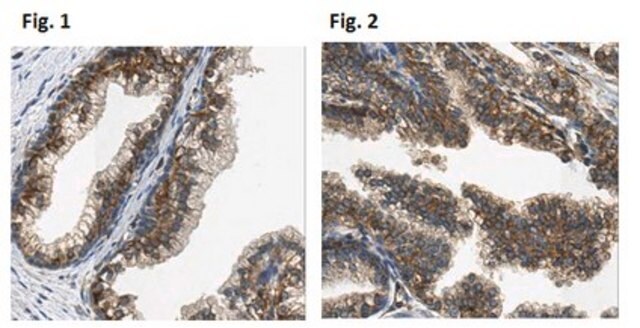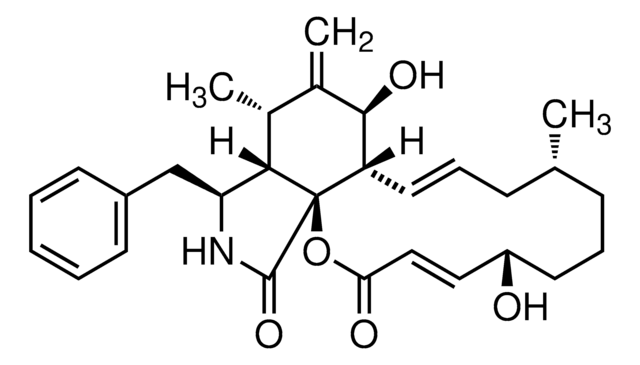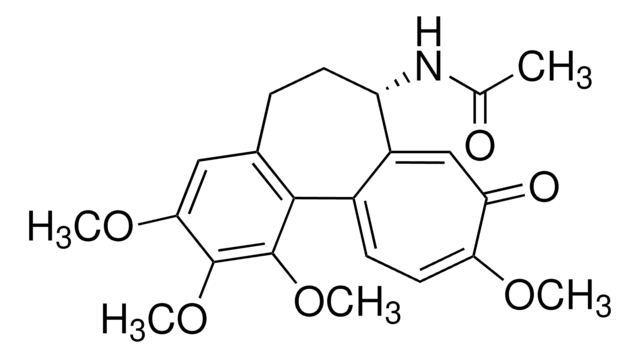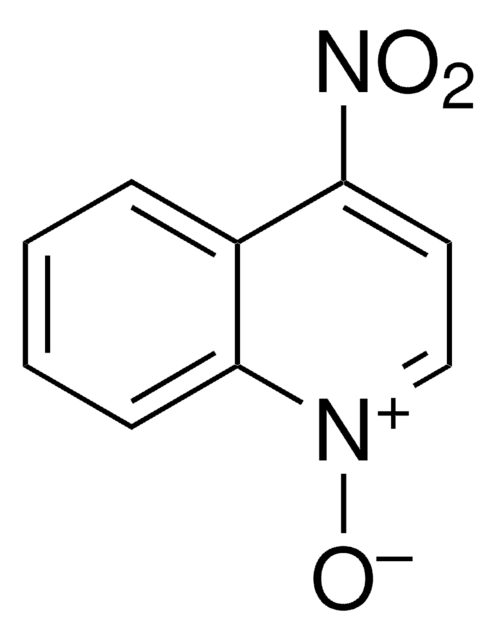M0440
Mitomycine C from Streptomyces caespitosus
meets USP testing specifications
Synonyme(s) :
Mitomycin
About This Item
Produits recommandés
Source biologique
Streptomyces caespitosus
Niveau de qualité
Couleur
blue-violet
Solubilité
H2O: 40 mg/mL, clear to very slightly hazy, colorless
H2O: soluble
Spectre d'activité de l'antibiotique
Gram-negative bacteria
Gram-positive bacteria
Mode d’action
DNA synthesis | interferes
Température de stockage
2-8°C
Chaîne SMILES
[H][C@]12CN3C4=C([C@@H](COC(N)=O)[C@@]3(OC)[C@@]1([H])N2)C(=O)C(N)=C(C)C4=O
InChI
1S/C15H18N4O5/c1-5-9(16)12(21)8-6(4-24-14(17)22)15(23-2)13-7(18-13)3-19(15)10(8)11(5)20/h6-7,13,18H,3-4,16H2,1-2H3,(H2,17,22)/t6-,7+,13+,15-/m1/s1
Clé InChI
NWIBSHFKIJFRCO-WUDYKRTCSA-N
Vous recherchez des produits similaires ? Visite Guide de comparaison des produits
Description générale
Application
Actions biochimiques/physiologiques
Spectre antimicrobien : La mitomycine C présente une activité antitumorale puissante, particulièrement envers les cellules du carcinome ascitique d′Ehrlich, et une forte activité bactéricide envers les bactéries à Gram négatif et à Gram positif.
Attention
Notes préparatoires
Mention d'avertissement
Danger
Mentions de danger
Conseils de prudence
Classification des risques
Acute Tox. 2 Oral - Carc. 2
Code de la classe de stockage
6.1A - Combustible acute toxic Cat. 1 and 2 / very toxic hazardous materials
Classe de danger pour l'eau (WGK)
WGK 3
Point d'éclair (°F)
Not applicable
Point d'éclair (°C)
Not applicable
Équipement de protection individuelle
Eyeshields, Faceshields, Gloves, type P3 (EN 143) respirator cartridges
Certificats d'analyse (COA)
Recherchez un Certificats d'analyse (COA) en saisissant le numéro de lot du produit. Les numéros de lot figurent sur l'étiquette du produit après les mots "Lot" ou "Batch".
Déjà en possession de ce produit ?
Retrouvez la documentation relative aux produits que vous avez récemment achetés dans la Bibliothèque de documents.
Les clients ont également consulté
Notre équipe de scientifiques dispose d'une expérience dans tous les secteurs de la recherche, notamment en sciences de la vie, science des matériaux, synthèse chimique, chromatographie, analyse et dans de nombreux autres domaines..
Contacter notre Service technique











